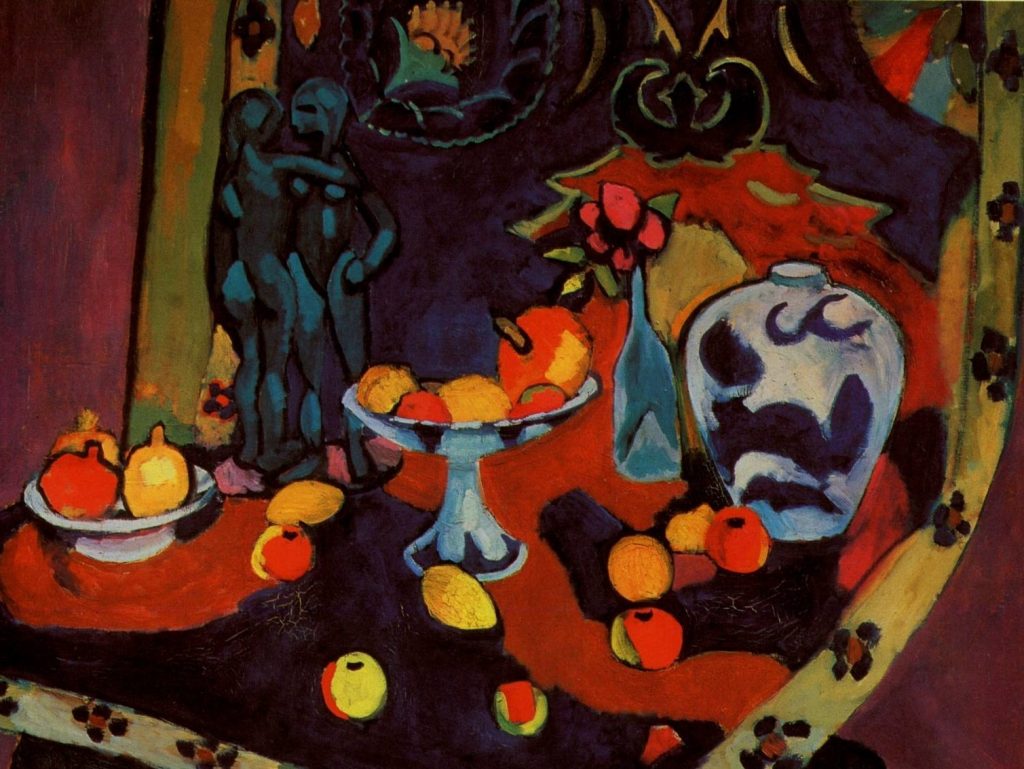 Much has been made of Henri Matisse’s use of color, and much should be. Arguably the most adventurous colorist in the history of art, the artist’s palettes improved upon peak foliage, peak blooms, and the many feathers in a peacock’s plume. The painterly equivalent of a pregnant lady’s incongruous cravings, his hues forever altered Western civilization’s understanding of how color could explode upon a canvas. Along with the introduction of LSD, he and other Fauvists may have been centrally responsible for the rainbow splendor of the 1960s.
Much has been made of Henri Matisse’s use of color, and much should be. Arguably the most adventurous colorist in the history of art, the artist’s palettes improved upon peak foliage, peak blooms, and the many feathers in a peacock’s plume. The painterly equivalent of a pregnant lady’s incongruous cravings, his hues forever altered Western civilization’s understanding of how color could explode upon a canvas. Along with the introduction of LSD, he and other Fauvists may have been centrally responsible for the rainbow splendor of the 1960s.
But in “Matisse in the Studio” at Boston’s Museum of Fine Arts (it’s since moved on to London’s Royal Academy of Arts), the artist’s patterns are as important as his palettes. Spanning fifty years, the show is organized into five sections – “The Object Is an Actor,” “The Nude,” “The Face,” “Studio as Theatre,” and “Essential Forms” – and features his paintings, sculptures, drawings, prints, and cutouts as well as key possessions that inspired him. Not all of these objects of affection are high-falutin’; among them are a chocolate pot, a green glass vase, a short chair, a pewter jug, haitis (embroidered hanging cloths) from North Africa, and masks and figurines from sub-Saharan Africa. But he appreciated each enough to use in his work again and again. “He acquired things not because of their material worth, but because of how they spoke to him,” MFA co-curator Helen Burnham has said.
In his paintings, aglow with ochres and mauves and tomato reds, female subjects do not dominate so much as contribute shapes and shades to whole series of shapes and shades. In what has been called a “quantity-quality equation,” areas of color, each marked by a different pattern, are arranged across his canvases so that they are all accorded their own value. In Matisse the Master, Hilary Spurling quotes him as saying: “Peace and harmony is always my aim.” With everything as foreground and therefore background too, this aim is abundantly evident. Each of his canvases constitutes a flourishing democracy, if ever there’s been one. (America should take note.) Continue Reading →

 Summer harvests are in full swing, as are all kinds of inspired cooking. This time of year, Mother Earth doesn’t just entice us to stop and smell the roses; she invites us to savor the tomatoes, shuck the corn, can the berries and pickle the cucumbers. It is time to compose meals from greenmarkets, farm stands, and our own gardens. It is time for slow food.
Summer harvests are in full swing, as are all kinds of inspired cooking. This time of year, Mother Earth doesn’t just entice us to stop and smell the roses; she invites us to savor the tomatoes, shuck the corn, can the berries and pickle the cucumbers. It is time to compose meals from greenmarkets, farm stands, and our own gardens. It is time for slow food. The other day I realized that it’d been more than a year since I dyed my hair. Though I don’t hate how the natural color complements my complexion, I’m going to streak the grey with a Kim Novack blond the minute I land a new commentating gig. (Notice I say when, not if; a positive step.) The whole business makes me think of my mom, Mary who renamed herself Sari. For decades, no matter how cross we were with each other, whenever my roots got too dark, she’d look at me contemplatively and say, “Maybe we should brighten your hair up.” And we would.
The other day I realized that it’d been more than a year since I dyed my hair. Though I don’t hate how the natural color complements my complexion, I’m going to streak the grey with a Kim Novack blond the minute I land a new commentating gig. (Notice I say when, not if; a positive step.) The whole business makes me think of my mom, Mary who renamed herself Sari. For decades, no matter how cross we were with each other, whenever my roots got too dark, she’d look at me contemplatively and say, “Maybe we should brighten your hair up.” And we would.